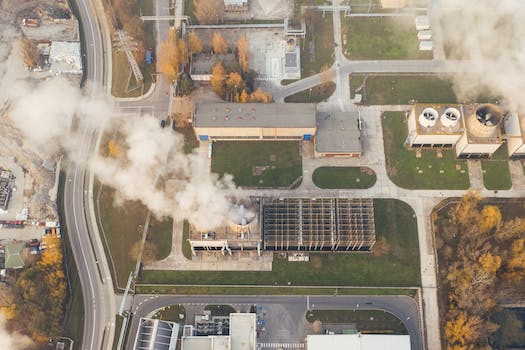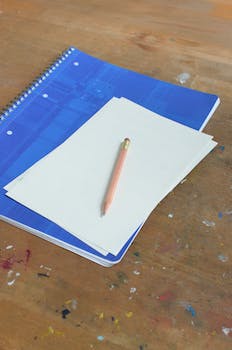

-
Table of Contents
"Breaking the chains of an outdated education, paving the way for a brighter future."
Introduction
The failure of our outdated educational system is a pressing issue that needs to be addressed.
The Impact of Standardized Testing on Student Learning
The Impact of Standardized Testing on Student Learning
Standardized testing has become a cornerstone of our educational system, with its proponents arguing that it provides an objective measure of student achievement. However, the reality is that standardized testing has had a detrimental impact on student learning. This article will explore the various ways in which standardized testing fails to adequately assess student abilities and stifles creativity and critical thinking.
One of the main problems with standardized testing is that it reduces education to a mere numbers game. Students are taught to focus solely on memorizing facts and regurgitating them on a test, rather than developing a deep understanding of the subject matter. This narrow approach to learning leaves little room for creativity and critical thinking, skills that are essential for success in the real world.
Furthermore, standardized testing places undue stress on students, leading to a host of negative consequences. The pressure to perform well on these tests can lead to anxiety and burnout, which can have long-lasting effects on a student's mental health. Additionally, the emphasis on test scores can create a competitive environment that fosters a sense of inadequacy and discourages collaboration among students.
Another major flaw of standardized testing is its one-size-fits-all approach. Every student is expected to perform at the same level, regardless of their individual strengths and weaknesses. This fails to take into account the fact that students have different learning styles and abilities. Some students may excel in certain subjects but struggle in others, and yet their overall intelligence and potential are reduced to a single test score.
Moreover, standardized testing fails to measure important skills that are crucial for success in the real world. These tests primarily focus on rote memorization and regurgitation of information, rather than assessing a student's ability to think critically, solve problems, and communicate effectively. As a result, students are ill-prepared for the challenges they will face in higher education and the workforce.
In addition to its impact on students, standardized testing also has negative consequences for teachers and schools. Teachers are forced to teach to the test, sacrificing valuable instructional time that could be spent on more meaningful and engaging activities. This narrow focus on test preparation limits teachers' ability to tailor their instruction to meet the unique needs of their students.
Furthermore, schools are often judged solely based on their students' test scores, leading to a narrow and distorted view of their overall performance. This creates a high-stakes environment where schools are pressured to prioritize test scores over the holistic development of their students. As a result, subjects such as art, music, and physical education are often neglected in favor of test preparation.
In conclusion, standardized testing has had a detrimental impact on student learning. It reduces education to a numbers game, stifles creativity and critical thinking, and fails to measure important skills needed for success in the real world. Moreover, it places undue stress on students, creates a competitive environment, and neglects the individual needs of students. It is clear that our outdated educational system needs to move away from standardized testing and embrace more holistic and student-centered approaches to assessment and learning. Only then can we truly prepare our students for the challenges they will face in the 21st century.
The Role of Technology in Modernizing Education

The Role of Technology in Modernizing Education
In today's fast-paced, technology-driven world, it is becoming increasingly clear that our traditional educational system is failing to keep up with the demands of the modern era. The outdated methods and practices that have been in place for decades are no longer sufficient to prepare students for the challenges they will face in the 21st century. However, there is hope on the horizon in the form of technology, which has the potential to revolutionize education and bring it into the digital age.
One of the key ways in which technology can modernize education is by providing students with access to a wealth of information and resources that were previously unavailable to them. With the internet at their fingertips, students can now conduct research, access educational materials, and collaborate with peers from around the world. This not only enhances their learning experience but also prepares them for the digital world they will enter upon graduation.
Furthermore, technology can also personalize the learning experience for each student, catering to their individual needs and learning styles. Adaptive learning platforms, for example, use algorithms to analyze a student's performance and provide personalized recommendations for improvement. This ensures that students receive targeted instruction and support, maximizing their potential for success.
Another way in which technology can modernize education is by fostering collaboration and communication among students and teachers. Online platforms and tools enable students to work together on projects, share ideas, and receive feedback in real-time. This not only enhances their critical thinking and problem-solving skills but also prepares them for the collaborative nature of the modern workplace.
Moreover, technology can also bridge the gap between the classroom and the real world. Virtual reality, for instance, allows students to explore historical sites, visit far-off places, and engage in immersive learning experiences that would otherwise be impossible. This not only makes learning more engaging and interactive but also helps students develop a deeper understanding of the subject matter.
However, it is important to note that technology alone is not a panacea for the problems plaguing our educational system. It must be integrated thoughtfully and effectively into the curriculum, with proper training and support for teachers. Without this, technology can become just another distraction or a tool that reinforces existing inequalities.
Furthermore, there are also concerns about the potential negative effects of technology on students' well-being. Excessive screen time, for example, has been linked to a range of physical and mental health issues. Therefore, it is crucial to strike a balance between the use of technology and other forms of learning and recreation.
In conclusion, technology has the potential to revolutionize education and bring it into the digital age. By providing students with access to information, personalizing the learning experience, fostering collaboration, and bridging the gap between the classroom and the real world, technology can help modernize our outdated educational system. However, it is important to approach its integration thoughtfully and effectively, with proper training and support for teachers, and to strike a balance between the use of technology and other forms of learning. Only then can we truly harness the power of technology to prepare students for the challenges of the 21st century.
Addressing Inequality in Education: A Call for Reform
The failure of our outdated educational system is a pressing issue that needs to be addressed urgently. In today's rapidly changing world, it is crucial that our education system keeps pace with the evolving needs of students. Unfortunately, our current system is failing to provide equal opportunities for all students, perpetuating inequality and hindering social mobility.
One of the main problems with our educational system is its outdated curriculum. Many schools still rely on traditional teaching methods that focus on rote memorization and standardized testing. This approach fails to foster critical thinking, creativity, and problem-solving skills, which are essential for success in the modern workforce. As a result, students are ill-prepared for the challenges of the 21st century and struggle to adapt to a rapidly changing job market.
Furthermore, our educational system perpetuates inequality by disproportionately allocating resources to affluent schools. Schools in low-income areas often lack proper funding, qualified teachers, and access to technology and resources. This creates a vicious cycle where students from disadvantaged backgrounds are denied the same opportunities as their wealthier peers. As a result, the achievement gap between students from different socioeconomic backgrounds continues to widen, further entrenching inequality in our society.
Another aspect of our educational system that needs reform is the one-size-fits-all approach to education. Every student is unique, with different strengths, interests, and learning styles. Yet, our current system treats all students as if they were the same, disregarding their individual needs. This approach fails to engage students and hampers their ability to reach their full potential. We need a more personalized approach to education that takes into account the diverse needs of students and provides them with the necessary support and resources to succeed.
Moreover, our educational system often neglects the importance of teaching practical life skills. While academic knowledge is undoubtedly important, students also need to learn essential life skills such as financial literacy, communication, and problem-solving. These skills are crucial for navigating the complexities of adulthood and achieving success in various aspects of life. By neglecting to teach these skills, our educational system fails to adequately prepare students for the challenges they will face outside of the classroom.
To address these issues, we need comprehensive educational reform that prioritizes equality, individuality, and practicality. This reform should include a revised curriculum that emphasizes critical thinking, creativity, and problem-solving skills. It should also ensure equal access to resources and opportunities for all students, regardless of their socioeconomic background. Additionally, a more personalized approach to education should be adopted, taking into account the unique needs and interests of each student.
Furthermore, teaching practical life skills should be integrated into the curriculum to equip students with the tools they need to succeed in the real world. This could include financial literacy courses, communication workshops, and problem-solving exercises. By implementing these reforms, we can create an educational system that empowers students, promotes equality, and prepares them for the challenges of the future.
In conclusion, our outdated educational system is failing to provide equal opportunities for all students and perpetuating inequality. To address this issue, comprehensive educational reform is needed. This reform should focus on revising the curriculum, ensuring equal access to resources, adopting a personalized approach to education, and teaching practical life skills. By implementing these changes, we can create an educational system that prepares students for the challenges of the 21st century and promotes social mobility.
Q&A
1. What are some reasons for the failure of our outdated educational system?
- Lack of adaptability to changing societal needs and technological advancements.
- Overemphasis on standardized testing and rote memorization.
- Insufficient focus on critical thinking, creativity, and practical skills.
2. How does the failure of our outdated educational system impact students?
- Students may struggle to develop essential skills needed for the modern workforce.
- Limited opportunities for individualized learning and catering to diverse learning styles.
- Higher levels of stress, anxiety, and disengagement among students.
3. What are potential consequences of the failure of our outdated educational system?
- Growing skills gap between graduates and job market requirements.
- Inequality in educational opportunities and outcomes.
- Reduced innovation and competitiveness on a global scale.
Conclusion
In conclusion, the failure of our outdated educational system is evident in its inability to adequately prepare students for the demands of the modern world. The system's focus on rote memorization and standardized testing limits critical thinking skills and stifles creativity. Additionally, the lack of emphasis on practical skills and real-world application leaves students ill-equipped for the workforce. It is crucial to reform the educational system to prioritize individualized learning, critical thinking, and the development of practical skills to ensure the success of future generations.











